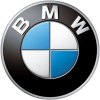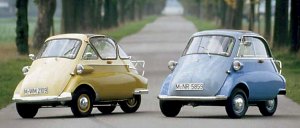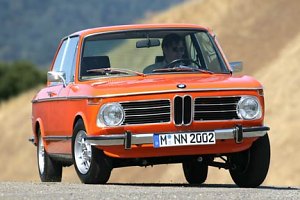
| Rolls-Royce
(UK) |
 Headquarters:
Munich
Headquarters:
MunichMain plants:
Germany: Munich (3er, 4er), Leipzig (1er, 2er, i3, i8), Regensburg (1er, 2er, 3er, 4er, X1, X2), Dingolfing (3er, 4er, 5er, 6er, 7er)
USA: Spartanburg (X3, X4, X5, X6)
UK: Oxford (MINI), Goodwood (Rolls-Royce)
South Africa: Rosslyn (3er)
China: Shenyang (JV with Brilliance) (1er, 2er, 3er, 5er, X1)
Contract production in Austria (by Magna Steyr): Graz (5er)
Contract production in Netherlands (by VDL Nedcar): Born (Mini, Countryman, X1)
2023: 2,555,341 units
2022: 2,399,636 units
2021: 2,521,525 units
2020: 2,325,179 units
2019: 2,537,504 units
2018: 2,490,664 units
2017: 2,463,526 units
2016: 2,367,603 units
2015: 2,247,485 units
2014: 2,117,965 units
2013: 1,963,798 units
2012: 1,845,186 units
2011: 1,668,982 units
2010: 1,461,166 units
2009: 1,286,310 units
2008: 1,435,876 units
2007: 1,500,678 units
2006: 1,373,926 units
2005: 1,327,992 units
2004: 1,208,732 units
2003: 1,104,916 units
2002: 1,057,444 units
2001: 905,657 units
2023 sales by brand:
BMW: 2,253,835 units (including 202,530 units M-cars)
Mini: 295,474 units
Rolls-Royce: 6,032 units
2020 sales by model:
1-Series: 164,056 units
2-Series: 104,859 units
3-Series: 381,416 units
4-Series: 38,879 units
5-Series: 302,564 units
6-Series: 19,893 units
7-Series: 46,025 units
8-Series: 20,703 units
X1: 230,041 units
X2: 74,229 units
X3: 292,328 units
X4: 55,237 units
X5: 168,674 units
X6: 38,100 units
X7: 48,693 units
Z4: 14,982 units
i3 + i8: 28,162 units
Mini hatch/Cabriolet/Clubman: 214,873 units
Mini Countryman: 77,709 units
Rolls-Royce Ghost: 324 units
Rolls-Royce Phantom: 360 units
Rolls-Royce Wraith/Dawn: 873 units
Rolls-Royce Cullinan: 2,199 units
To expand to cheaper segments, where front-wheel drive is a must, BMW purchased Rover in 1994. It failed to turn around the British company, but it kept the MINI brand when it sold Rover in 2000. With adequate design and engineering, the reborn MINI has become the most successful new product line from BMW in years, more so than its own 1-Series.
In comparison, the investment in another British marque, Rolls-Royce, seems less successful. Although it got favourable comments from the press, it is still struggling to meet its sales target.
The first BMW production car was Dixi, which was actually an Austin Seven produced under license. However, it was the 2-litre sports car 328 which made reputation for the company in 1936. This elegant and aerodynamic efficient sports car had strong presence in motor racing and took a class victory in Mille Miglia.
 1955 Isetta - the saviour to BMW
1955 Isetta - the saviour to BMWAfter WWII and a 3-year ban of production by the Allies, BMW recovered slowly and painfully like the whole Germany. A new luxury saloon called 501 was developed but few people could afford it. Fortunately, another decision to purchase the production rights of Iso Isetta micro car proved right, as 200,000 copies were sold in the next few years and saved the company from bankruptcy.
At the same time, BMW continued developing its own cars. The V8-powered 507 sports car won acclaims for its beauty, but it was again too expensive to find commercial success. However, Munich finally found a new direction in 1962, when it launched its new compact sedan 1500. It was fun to drive yet better built and more reliable than the similar Alfa Romeo Giulia. Later on, the 1500 evolved to 1600, 1800 and eventually 2002. The latter found massive sales success in the US market thanks to its strong performance, good handling and affordable price.
 1966 BMW 2002 series
1966 BMW 2002 seriesUnder the leadership of Eberhard von Kuenheim, BMW grew rapidly in the 1970s and 80s. It successfully opened a new market segment - compact premium car - with the 3-Series in 1975, which would become Munich's best selling model until today. When Mercedes finally responded with 190E in 1982, the 3-Series had already entered its second generation and established a solid lead.
In 1972, BMW established its Motorsport division, which not only participated in motorsport but also developed the mid-engined supercar M1. It would be responsbile for many more M3 and M5 in the following years.
BMW completed its 3-tier mainstream product line by introducing the 5-Series in 1972 and 7-Series in 1977. Then it turned its energy to niche models, such as 6-Series, 8-Series and Z1, which gave mixed results.
 1979 BMW M1
1979 BMW M1Entering 1990s, new CEO Bernd Pischetsrieder found further sales increase would be impossible from its existing product lineup. Expansion to small car segments and sport utilities would be inevitable. As it did not want to risk its driver-oriented image established by its rear-drive cars through the years, it decided to acquire Rover Group of UK in 1994, making use of its Rover and MINI brand to sell front-wheel drive small cars and Land Rover to sell offroaders. By unit sales, this lifted BMW group to be the 7th largest car maker in the world. Nevertheless, despite of heavy investment made to develop Rover 75 and new Land Rover models, during the six years ownership it failed to turnaround the loss-making British unit. In 2000, BMW finally sold Rover to Phoenix Venture Holding and Land Rover to Ford. However, the German kept MINI and its Crowley plant under its wings and continued to develop it into a successful line.
 1998 BMW 3-Series E46
1998 BMW 3-Series E46Apart from MINI, BMW also wanted to enter the top luxury market by buying Rolls-Royce. Although Volkswagen Group beat it to acquire Rolls-Royce / Bentley in 1998, BMW secured the rights of Rolls-Royce name via its relationship with jet engine maker Rolls-Royce Plc. Eventually the two German companies agreed to split Bentley and RR, with the former went to VW and the latter handed over to BMW since 2003. As the Crewe factory belonged to Volkswagen, BMW invested a new factory in Goodwood of England to be the headquarters of RR.
After offloading Rover, BMW concentrated back on its own brand and introduced many new lines, such as the new entry-level 1-Series and the sport ultility / crossover X3, X5 and X6. From 2001 to 2007, its sales increased steadily from 906,000 to 1,500,000 units, pushing it beyond Mercedes-Benz as the world's largest premium car maker.